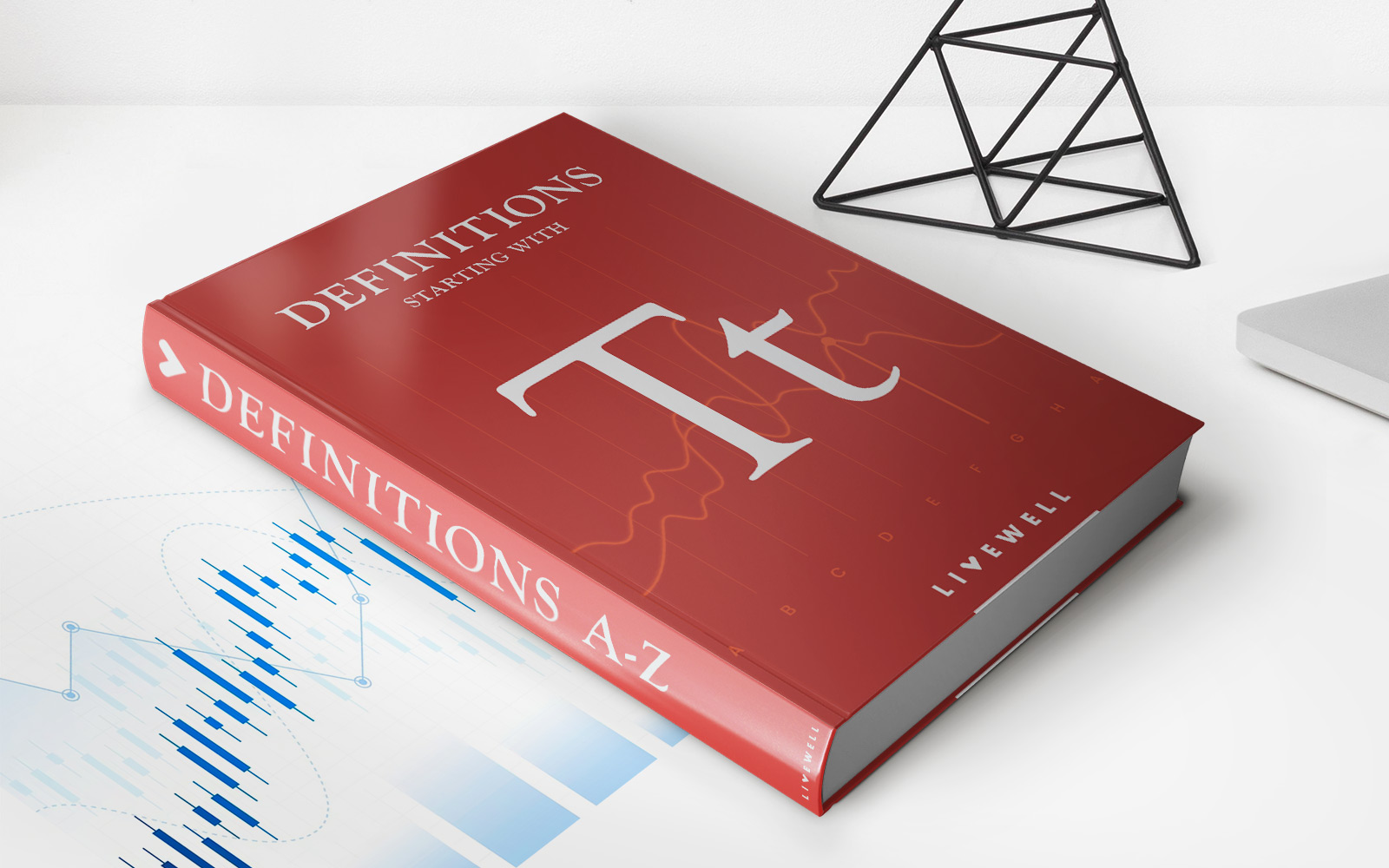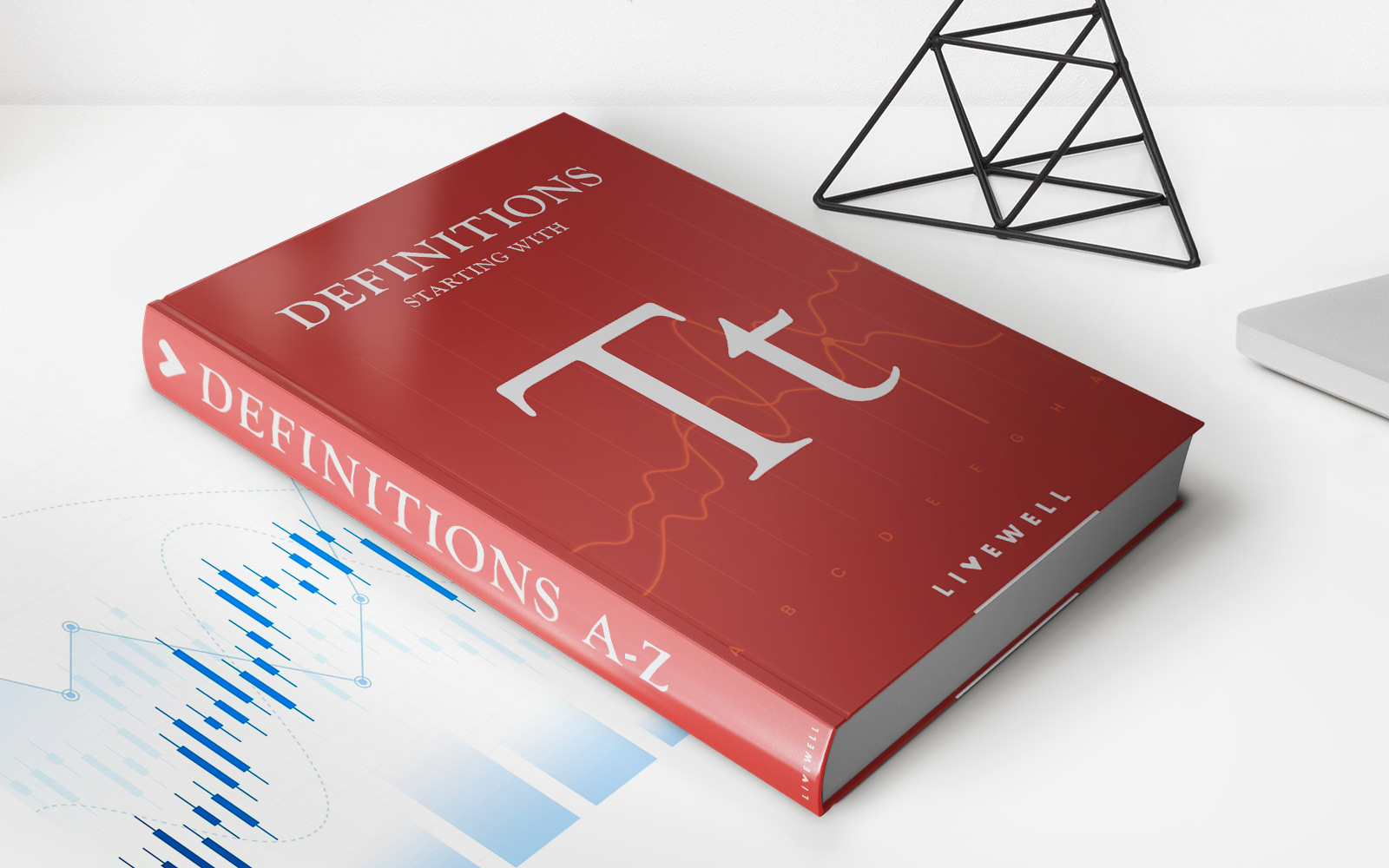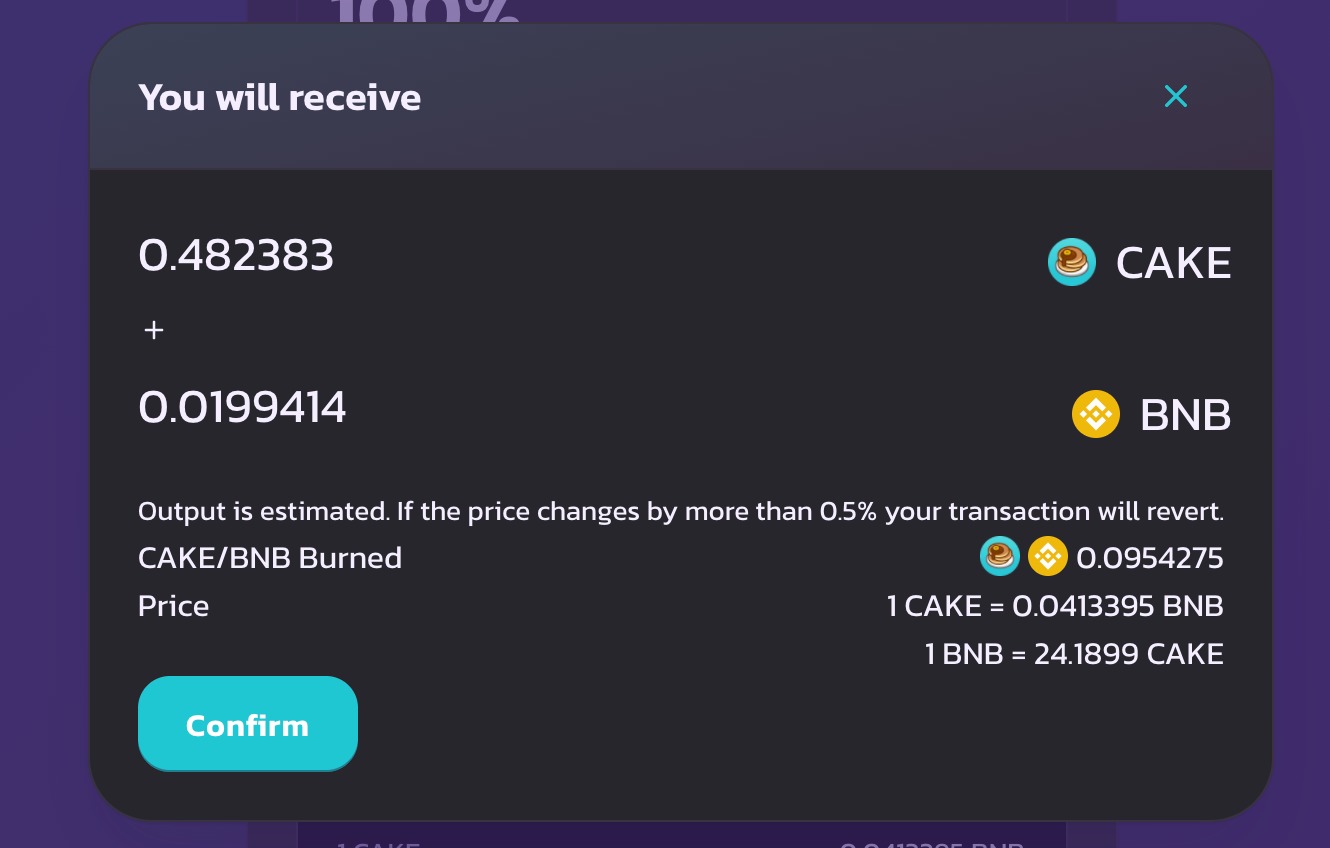

Finance
What Is Book Transfer Credit
Modified: January 15, 2024
Explore how book transfer credit works in the field of finance and how it can affect your financial education and future career opportunities.
(Many of the links in this article redirect to a specific reviewed product. Your purchase of these products through affiliate links helps to generate commission for LiveWell, at no extra cost. Learn more)
Table of Contents
- Introduction
- Definition of Book Transfer Credit
- Purpose and Benefits of Book Transfer Credit
- Eligibility and Requirements for Book Transfer Credit
- Process of Applying for Book Transfer Credit
- Evaluation and Approval of Book Transfer Credit Requests
- Limitations and Restrictions of Book Transfer Credit
- How Book Transfer Credit Affects Degree Completion
- Comparison of Book Transfer Credit with Other Types of Credit Transfer
- Conclusion
Introduction
When it comes to pursuing higher education, students often seek ways to expedite their academic journey and reduce the time and cost associated with completing a degree. One method that can help achieve these goals is through book transfer credit. In this article, we will explore the concept of book transfer credit in detail, discussing its definition, purpose, eligibility criteria, application process, evaluation and approval procedures, as well as its limitations and implications for degree completion.
Book transfer credit, also known as credit by examination or credit for prior learning, allows students to earn college credits by demonstrating their knowledge and mastery of a subject matter through self-study or other non-traditional methods. Rather than taking a traditional course, students can prove their proficiency by successfully completing an examination or assessment.
The purpose of book transfer credit is to recognize and reward students for the knowledge they have acquired outside of formal classroom settings. It provides an opportunity for individuals who have gained expertise through work experience, independent study, or other means to showcase their competence and earn college credits that count towards their degree.
The benefits of book transfer credit are plentiful. Firstly, it can help students save both time and money. By earning credits through book transfer, they can potentially skip introductory or basic courses and move directly into more advanced coursework. As a result, their path to graduation becomes more efficient, allowing them to complete their degree in a shorter time frame.
Additionally, book transfer credit can have a positive impact on the overall cost of education. By reducing the number of courses required to graduate, students can potentially save on tuition fees and related expenses. This can be particularly beneficial for non-traditional students or those who are working and have financial constraints.
Moreover, book transfer credit provides an avenue for lifelong learners to receive formal recognition for their knowledge and skills. It encourages individuals to continue pursuing personal and professional development outside of traditional academic settings, fostering a culture of lifelong learning and growth.
Overall, book transfer credit offers a flexible and convenient way for students to earn college credits based on their existing knowledge and expertise. It acknowledges the value of non-traditional learning experiences and allows individuals to accelerate their educational journey. In the following sections, we will delve into the eligibility requirements and application process for book transfer credit, shedding light on how it can impact a student’s path to degree completion.
Definition of Book Transfer Credit
Book transfer credit refers to the practice of granting college credits to students based on their demonstration of knowledge and proficiency in a particular subject through self-study or non-traditional learning methods. Instead of taking a formal course, students can earn credits by passing an examination or assessment that covers the material typically taught in that course.
Book transfer credit is also known as credit by examination or credit for prior learning. It is a means of recognizing the knowledge and skills that students have acquired through experiences outside of the traditional classroom setting, such as work experience, independent study, or self-paced learning.
This alternative credit option allows students to bypass the traditional course structure and instead showcase their competency in a specific subject area. By successfully completing the required assessment, students are awarded the equivalent college credits that count towards their degree program.
Book transfer credit can be sought in various disciplines, including but not limited to literature, history, mathematics, science, and foreign languages. It provides an opportunity for students to accelerate their degree completion by skipping introductory or foundational courses and proceeding directly to more advanced coursework.
It is important to note that book transfer credit is not universally accepted by all institutions and programs. Each college or university may have its own policies and guidelines regarding the acceptance of book transfer credits. Therefore, it is crucial for students to thoroughly research and consult with their academic advisors to ensure that the credits earned through book transfer will be recognized and applicable to their desired degree program.
Book transfer credit is a valuable option for students who have acquired knowledge or skills through independent study or real-world experiences. It offers a way to receive academic recognition for learning that has taken place outside of the traditional classroom setting. By providing an alternative to formal coursework, it offers flexibility and efficiency to students in their pursuit of higher education.
Purpose and Benefits of Book Transfer Credit
The purpose of book transfer credit is to recognize and reward students for the knowledge and skills they have acquired outside of formal classroom settings. It offers an opportunity for individuals to demonstrate their proficiency in a subject matter and earn college credits that count towards their degree.
One of the key benefits of book transfer credit is the potential time and cost savings it offers to students. By earning credits through examination or assessment, students can bypass introductory or basic courses and move directly into more advanced coursework. This enables them to accelerate their academic journey and complete their degree in a shorter time frame.
Additionally, book transfer credit can have a positive impact on the overall cost of education. By reducing the number of courses required, students can potentially save on tuition fees and related expenses. This is particularly advantageous for non-traditional students, such as adult learners or working professionals, who may have financial constraints or limited time availability.
Furthermore, book transfer credit recognizes the value of non-traditional learning experiences. It acknowledges that individuals can gain knowledge and skills through various means, such as work experience, independent study, or self-paced learning. By providing a pathway for individuals to demonstrate their competency in a subject, book transfer credit promotes lifelong learning and validates the diverse ways in which people acquire knowledge.
Another benefit of book transfer credit is the flexibility it offers in terms of course selection. By allowing students to skip introductory courses, they have the freedom to focus on more specialized and advanced subjects that align with their interests and career goals. This flexibility allows for a more tailored and personalized educational experience.
Moreover, book transfer credit can enhance a student’s academic profile. It demonstrates their ability to self-study, take initiative, and apply their knowledge in a formal assessment. This can be particularly valuable for graduate school applications or when seeking employment, as it showcases the student’s dedication, determination, and intellectual capabilities.
Overall, book transfer credit provides a variety of benefits to students, including time and cost savings, flexibility in course selection, validation of non-traditional learning experiences, and the opportunity to enhance their academic profile. It is a valuable option for individuals who have acquired knowledge and skills through alternative pathways and seek to expedite their degree completion while maintaining academic rigor.
Eligibility and Requirements for Book Transfer Credit
To be eligible for book transfer credit, students must meet certain criteria and fulfill specific requirements set by the college or university. While the exact eligibility guidelines may vary from institution to institution, there are common factors that are typically considered when assessing a student’s eligibility for book transfer credit.
First and foremost, students must demonstrate a strong foundation of knowledge and understanding in the subject area for which they are seeking book transfer credit. This can be achieved through independent study, self-guided learning, work experience, or other non-traditional learning methods. The student must be able to showcase their mastery of the subject matter through successful completion of an examination or assessment.
It is important for students to thoroughly research and understand the specific requirements and expectations of the college or university. Some institutions may require a minimum passing score on the book transfer credit assessment, while others may have additional criteria, such as a portfolio review or an interview with a faculty member in the respective department.
Additionally, the institution may impose restrictions on the number of credits that can be earned through book transfer credit. There may be a maximum limit on the number of credits that can be transferred, or certain courses or disciplines may be excluded from book transfer credit eligibility.
Furthermore, each college or university may have its own process and procedures for documenting and verifying the student’s non-traditional learning experiences. This may involve submitting transcripts, portfolio samples, certifications, or other evidence of the student’s proficiency in the subject area.
It is crucial for students to consult with their academic advisors or the relevant department to understand the specific eligibility requirements and procedures for book transfer credit. They can provide guidance on the necessary documentation and assist in determining whether book transfer credit is a viable option for the student’s academic goals.
Overall, eligibility for book transfer credit is determined by the student’s ability to demonstrate their knowledge and proficiency in a subject through non-traditional means. By meeting the institution’s requirements and fulfilling the necessary criteria, students can potentially earn college credits that count towards their degree, providing a pathway to expedited degree completion and recognition of their non-traditional learning experiences.
Process of Applying for Book Transfer Credit
The process of applying for book transfer credit varies depending on the college or university, but there are general steps that most institutions follow. To give you an idea, here is an overview of the typical process:
- Research and Consultation: Before applying for book transfer credit, students should research the specific policies and guidelines of their institution. It is essential to consult with academic advisors or the department responsible for evaluating book transfer credit to understand the requirements, procedures, and eligible subjects for credit transfer.
- Preparation: Once students have identified a subject for which they want to apply for book transfer credit, they should gather the necessary materials to support their application. This may include study guides, textbooks, notes, certificates, or any other evidence that demonstrates their knowledge and proficiency in the subject area.
- Application Submission: Students will need to submit an application for book transfer credit, along with the supporting materials. The application typically includes personal information, the subject in which credit is being sought, and any relevant documentation that showcases the student’s expertise in the field.
- Assessment or Examination: After the application is submitted, the institution will assess the student’s eligibility for book transfer credit. Depending on the institution’s policy, this may involve an examination or assessment designed to determine the student’s knowledge and proficiency in the subject area. The assessment may be administered online or in person, and students will need to demonstrate their understanding of the subject matter through successful completion of the assessment.
- Evaluation and Credit Transcription: Once the assessment is completed, the institution will evaluate the results and determine the number of credits to be awarded. If the student meets the criteria for book transfer credit, the credits will be transcribed on their academic record, usually as transfer credits.
- Notification: After the evaluation process, the student will be notified of the outcome of their book transfer credit application. They will receive information regarding the number of credits earned and how those credits will apply towards their degree requirements.
It is important to note that the timeline for the application and evaluation process can vary. Students should plan ahead and submit their applications with sufficient time to allow for processing and evaluation, especially if they intend to use the book transfer credit towards their immediate academic plans.
Students should also be aware that there may be fees associated with applying for book transfer credit. These fees can vary depending on the institution and are typically non-refundable. It is advisable to check with the institution regarding any applicable fees and payment requirements.
By following these steps and carefully adhering to the institution’s guidelines and requirements, students can successfully apply for book transfer credit and potentially earn credits that count towards their degree program.
Evaluation and Approval of Book Transfer Credit Requests
The evaluation and approval process for book transfer credit requests involves a thorough assessment of the student’s knowledge and proficiency in the subject area. The specific procedures may vary among institutions, but there are several key factors that are typically considered:
Documentation Review: The institution will review the documentation submitted by the student as part of their book transfer credit request. This may include study guides, textbooks, notes, certifications, or any other evidence of the student’s knowledge and competence in the subject matter. The documentation will be evaluated to determine the depth and breadth of the student’s understanding of the subject.
Assessment Performance: Depending on the institution, the evaluation of book transfer credit requests may involve an examination or assessment. The student will be assessed on their knowledge and proficiency in the subject area. The assessment may be in the form of a written exam, oral interview, practical demonstration, or a combination of these methods. The student’s performance in the assessment will be a key factor in determining the granting of book transfer credit.
Alignment with Course Learning Outcomes: The institution will assess whether the student’s knowledge and skills align with the learning outcomes of the equivalent course for which book transfer credit is being sought. The institution will evaluate whether the student has met the required standards and can demonstrate the same level of competency as students who have completed the course through traditional means.
Faculty Review: In some cases, the book transfer credit request may go through a faculty review process. This involves the evaluation of the student’s documentation and performance by faculty members with expertise in the subject area. The faculty members will determine whether the student’s knowledge and skills meet the academic standards necessary for the granting of book transfer credit.
Credit Determination: Once the evaluation process is completed, the institution will determine the number of credits to be awarded for the book transfer credit request. The credits granted may be based on a certain percentage of the total credits awarded for the equivalent course or may be determined based on the overall assessment of the student’s knowledge and proficiency in the subject.
Approval Decision: The final approval decision will be communicated to the student, indicating whether the book transfer credit has been granted or not. If approved, the institution will transcribe the credits on the student’s academic record, typically as transfer credits. These credits will count towards the student’s degree requirements and contribute to their overall progress toward graduation.
It is important for students to be aware that the evaluation and approval of book transfer credit requests may take some time. This is especially true if a faculty review is involved or if there is a high volume of requests. Students should plan accordingly and submit their requests well in advance of any anticipated timeline for degree completion or course registration.
Overall, the evaluation and approval of book transfer credit requests involve a comprehensive review of the student’s documentation, performance in assessments, alignment with course learning outcomes, and fulfillment of academic standards. By meeting these criteria, students can potentially earn transfer credits that recognize their knowledge and skills acquired through non-traditional means.
Limitations and Restrictions of Book Transfer Credit
While book transfer credit offers many benefits, it is important for students to be aware of the limitations and restrictions that may be associated with this type of credit transfer. Understanding these limitations can help students make informed decisions and manage their expectations when pursuing book transfer credit. Here are some common limitations and restrictions to consider:
Minimum Passing Standards: Institutions often set minimum passing standards for book transfer credit assessments. Students must meet or exceed these standards to be eligible for credit transfer. If a student does not meet the minimum passing criteria, they may not be granted book transfer credit, and alternative options may need to be explored.
Course Equivalency: Book transfer credit is typically granted for specific courses within an institution. It is important to note that not all courses may be eligible for book transfer credit. Institutions may have restrictions on which courses are eligible for credit transfer, and it may vary based on the academic department or program. Students should consult the institution’s policies and guidelines to determine which courses are eligible for book transfer credit.
Transfer Restrictions: Institutions may have limitations on the number of credits that can be transferred through book transfer credit. There may be a maximum limit imposed on the number of credits that can be earned through this method, and students may need to meet other credit requirements to remain eligible for transfer.
Programmatic Restrictions: Some degree programs may have specific limitations or restrictions on the acceptance of book transfer credit. Certain professional programs or accreditation bodies may not allow book transfer credit for certain courses or specializations. Students should consult with their academic advisors or program coordinators to understand any program-specific restrictions.
Grade Limitations: While book transfer credit may transfer the credits earned, it is important to note that the grade achieved through book transfer credit may not be calculated into the student’s GPA. The credits may apply towards degree requirements, but they may not have any impact on the overall GPA calculation.
Transferability: It is important to recognize that book transfer credit may not be universally accepted by other institutions. If a student plans to transfer to a different college or university, the receiving institution may have its own policies and guidelines for accepting book transfer credits. Transferability of book transfer credits should be carefully considered before making decisions regarding degree completion at different institutions.
It is vital for students to thoroughly research and understand the limitations and restrictions that apply to book transfer credit at their specific institution. Consulting with academic advisors and the relevant department is crucial to ensure a clear understanding of the rules and regulations governing book transfer credit.
Despite these limitations, book transfer credit remains a valuable option for students to accelerate their degree completion and receive credit recognition for their non-traditional learning experiences. By being aware of the limitations and restrictions, students can make informed decisions and maximize the benefits of this alternative credit option.
How Book Transfer Credit Affects Degree Completion
Book transfer credit can have a significant impact on a student’s degree completion journey. By earning college credits through non-traditional means, students can expedite their progress towards graduation and potentially reduce the time and cost associated with completing a degree.
One of the primary ways that book transfer credit affects degree completion is by allowing students to bypass introductory or basic courses. By demonstrating their knowledge and proficiency in a specific subject through book transfer credit, students can often skip these foundational courses and enroll directly in more advanced coursework. This can shorten the duration of their program and enable them to focus on more specialized areas of study.
The ability to skip introductory courses not only saves time but can also lead to cost savings. By reducing the number of credits required, students may be able to save on tuition fees and related expenses. This is particularly beneficial for non-traditional students or those on a tight budget who wish to complete their degree as efficiently and economically as possible.
Furthermore, book transfer credit can provide flexibility in the course selection. Students can use book transfer credits to meet specific requirements within their degree program or to tailor their course load towards their interests and career goals. This flexibility allows for a more customized and personalized learning experience, enhancing the student’s engagement and motivation.
In terms of degree completion, book transfer credit contributes to the accumulation of credits required for graduation. The credits earned through book transfer credit are typically counted towards the total number of credits needed to fulfill degree requirements. By earning these credits, students make tangible progress towards completing their degree and can potentially graduate earlier than if they had not pursued book transfer credit.
However, it is important for students to be mindful of any limitations or restrictions on book transfer credit imposed by their institution. This may include a maximum number of credits that can be earned through book transfer, specific course requirements, or programmatic restrictions. Students should work closely with their academic advisors to ensure that their book transfer credit aligns with their academic goals and degree requirements.
Ultimately, book transfer credit can be a valuable tool for students to accelerate their degree completion and make the most of their prior learning experiences. By utilizing this option strategically, students can enhance their educational journey, save time and money, and achieve their academic goals in a more efficient and personalized manner.
Comparison of Book Transfer Credit with Other Types of Credit Transfer
When it comes to credit transfer, there are various methods available for students to earn credits towards their degree. Two common types of credit transfer often compared with book transfer credit are transfer credit and credit for prior learning. Let’s explore the similarities and differences between these credit transfer options:
Transfer Credit: Transfer credit typically refers to the process of transferring credits earned from one institution to another. This occurs when a student transfers from one college or university to another. Transfer credit is usually based on completed coursework and is determined by evaluating the equivalency of the courses taken at the previous institution with the courses offered at the receiving institution. Transfer credit is typically earned through formal classroom instruction rather than through self-study or assessments.
Credit for Prior Learning: Credit for prior learning, also known as experiential learning or portfolio assessment, is another type of credit transfer that recognizes knowledge and skills gained through real-life experiences. This can include work experience, military training, volunteer work, or other non-classroom learning experiences. Unlike book transfer credit, credit for prior learning involves the assessment and evaluation of a student’s experiential learning portfolio, which may include documented evidence, such as a resume, portfolios, certifications, or reflective essays.
Book Transfer Credit: In comparison, book transfer credit specifically focuses on earning credits through self-study or the successful completion of an examination or assessment. It recognizes the knowledge and proficiency acquired by an individual outside of formal classroom settings. Book transfer credit allows students to earn credits by demonstrating their understanding of a subject matter without completing a traditional course. It offers a flexible and efficient way to assess and reward a student’s knowledge and can be particularly useful for non-traditional learners or individuals who have gained expertise through independent study or work experience.
While the methods of earning credits differ, all three types of credit transfer have the potential to accelerate a student’s degree completion and reduce the number of courses required. However, there are some notable differences:
Evaluation Process: Transfer credit focuses on the evaluation of completed coursework, while book transfer credit assesses knowledge and proficiency through self-study or assessments. Credit for prior learning evaluates knowledge acquired through real-life experiences and often requires the submission of a portfolio for assessment.
Learning Method: Transfer credit is earned through formal classroom instruction, book transfer credit is typically self-study, and credit for prior learning is based on experiential learning. Each method recognizes different forms of learning experiences.
Documentation Requirements: Transfer credit relies on transcripts and official documentation from the previous institution. Book transfer credit may require study guides, textbooks, or other evidence of self-study or assessment completion. Credit for prior learning often necessitates the compilation of a portfolio showcasing experiential learning.
Acceptance and Policies: Acceptance of transfer, book transfer, and credit for prior learning credits may vary across institutions. Each college or university has its own policies and guidelines regarding the acceptance and limitations of these types of credits. It is essential for students to research and consult with academic advisors to understand the specific requirements and policies of their institution.
In summary, while transfer credit, book transfer credit, and credit for prior learning serve the purpose of granting credits towards degree completion, they differ in terms of evaluation methods, learning experiences recognized, and documentation requirements. Understanding the distinctions between these credit transfer options can help students determine the most suitable method for earning credits based on their individual circumstances and learning experiences.
Conclusion
Book transfer credit is a valuable option for students seeking to accelerate their degree completion and receive recognition for their non-traditional learning experiences. It allows individuals to earn college credits by demonstrating their knowledge and proficiency in a subject through self-study or assessments. By bypassing introductory courses and moving directly into more advanced coursework, students can save time and potentially reduce the cost of their education.
The benefits of book transfer credit extend beyond time and cost savings. It provides flexibility in course selection, allowing students to focus on specialized areas of study aligned with their interests and career goals. Book transfer credit also recognizes the value of non-traditional learning experiences and fosters a culture of lifelong learning.
However, it is important for students to be mindful of the limitations and restrictions that may apply to book transfer credit. Eligibility criteria, course equivalency, transferability to other institutions, and other factors can impact the acceptance and applicability of book transfer credit.
When considering book transfer credit, students should conduct thorough research, consult with academic advisors, and ensure that the credits earned align with their academic goals and degree requirements. It is also important to comply with the specific procedures and documentation requirements set by their institution.
In comparison with other types of credit transfer, such as transfer credit and credit for prior learning, book transfer credit offers a unique opportunity for students to earn credits based on self-study or assessments. Understanding the differences between these credit transfer options is essential when determining the most suitable method to expedite degree completion and recognize prior learning experiences.
In conclusion, book transfer credit is a powerful tool to accelerate degree completion, recognize non-traditional learning, and enhance the overall educational journey. By embracing this alternative credit option, students can maximize their learning experience, save time and costs, and achieve their academic goals in a more efficient and personalized manner.














